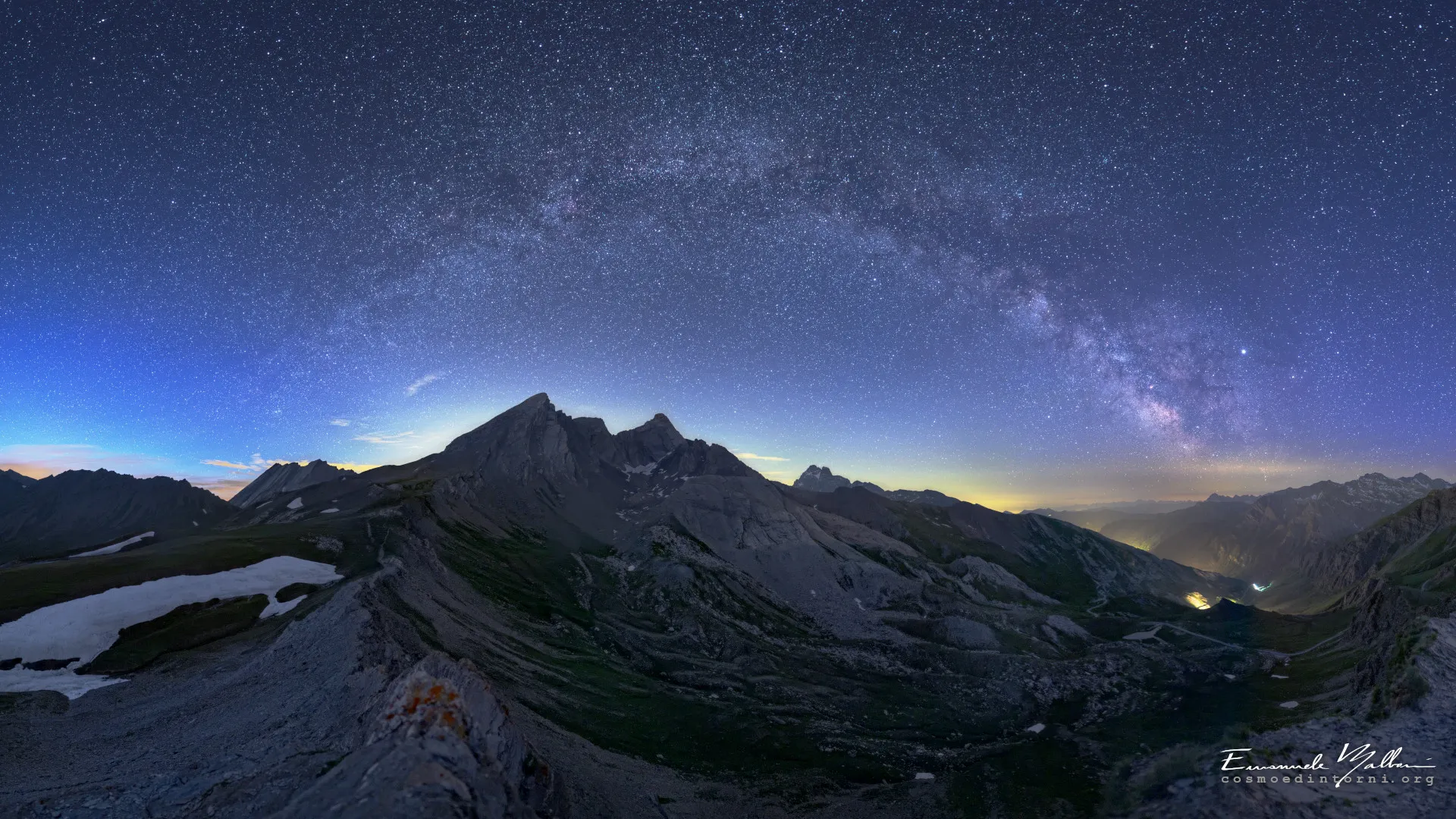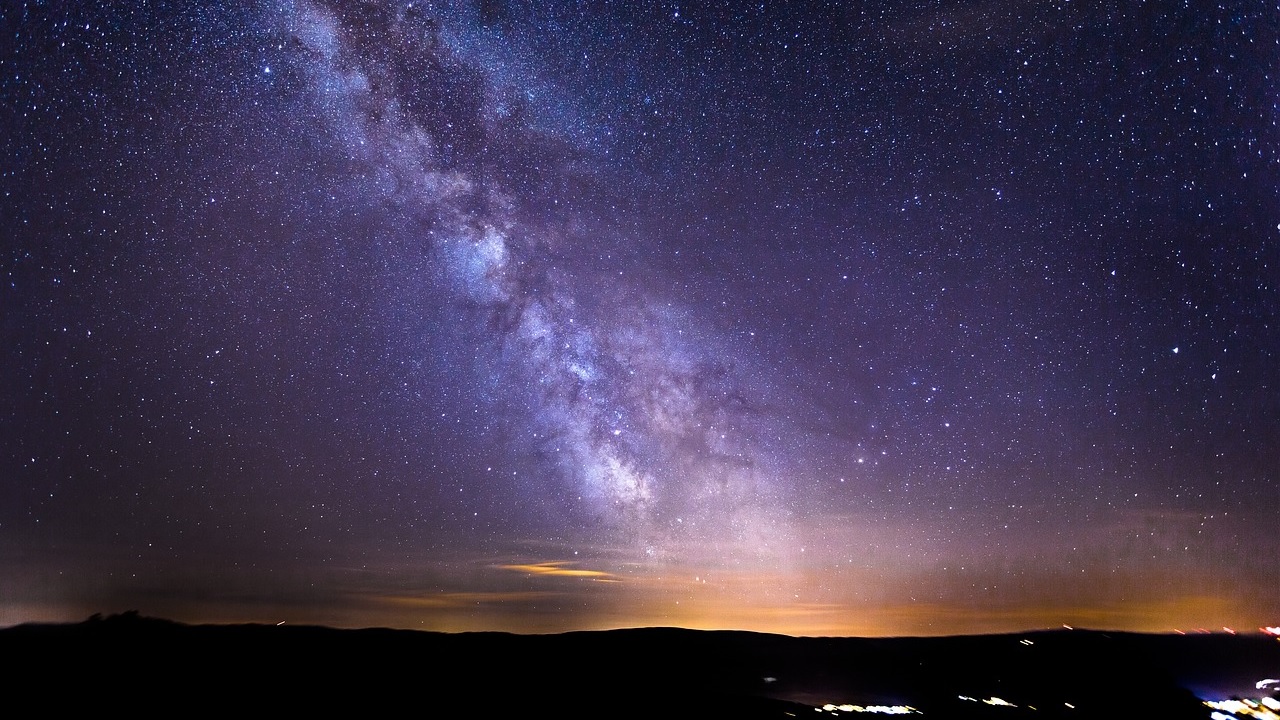Stardust and eternity – 3.4.1
The Milky Way (astrophysics)
Our galaxy, the Milky Way, is just one of hundreds of billions of galaxies that populate the Universe. More specifically, it is an important component of the Local Group of galaxies and is part of the immense Virgo Supercluster. It appears as a hazy, whitish band of light, about 30° wide, crossing the night sky. Since we are part of the galaxy and observe it from within, our perspective has never been the best to build a global view of its actual size and shape – also because our view is obscured by the idust and gases surrounding it. Until the 1920s, most astronomers were even convinced that the Milky Way contained the entire Universe! This controversy was only resolved in 1924, when the American astronomer Edwin Hubble (1889-1953) proved that many celestial objects, previously classified as clouds of dust and gas and categorized as “nebulae” in the Messier Catalogue, were actually galaxies beyond the Milky Way.
According to Hubble’s classification, the Milky Way has been recognized as a barred spiral galaxy, that is, containing a central bar-shaped structure with a sort of “bulge” at its center. The bulge extends above and below the galactic disc, which consists mainly of old stars. Since the oldest stars in our galaxy are more than 13 billion years old, it is assumed that the Milky Way is only slightly younger than the universe, which is 13.7 billion years old. The flattened spiraled galactic disc is very extensive: it is about 90,000 light years long, just 1,000 light years thick, and contains hundreds of billions of stars. The Solar System is located at about 27,000 light years from the center, i.e. about 3/5 of the radius of the Galaxy, and occupies the inner rim of one of Orion’s Arms (?), orbiting at a speed of about 220 km/s, and completing one orbital revolution in no fewer than 240 million years (?). Star formation mostly takes place in the arms, where the youngest stars are concentrated due to the presence of giant molecular clouds – often regarded as “stellar nurseries”.
The galactic disc is surrounded by a sort of stellar “halo”, spherical in shape, which contains a few hundred globular clusters – the oldest-known objects in the galaxy. Moreover, a very hot gaseous halo – similar to the solar corona, hundreds of thousands of light years long – contains a mass that is equal to that of all the stars in the galaxy. Since both the bulge and the halo are made of old stars, it is probable that the Milky Way was born as a spherical cloud that eventually collapsed under its own gravity and began rotating, assuming its characteristic disc-like shape. At the center of the galactic bulge, an intense radio source – Sagittarius A* – harbors a supermassive black hole, whose mass is about 4 million times that of the Sun. The annular accretion disc around this extremely compact object was recently photographed with the Event Horizon Telescope, a worldwide network of radio observatories.
Astronomers have found evidence that there must be much more hidden mass or “dark matter” in our galaxy than actually observed. Indeed, although the supposed mass of the Milky Way is about 1 trillion times the mass of the Sun, the luminous mass – estimated by adding the masses of the visible stars, dust, and gas – is just about 10% as much. The composition of 90% of “dark matter” – provided that it actually exists – is still a great mystery.


Further resources
Links below will redirect you to external websites. In accordance with the European data protection declarations, we would like to point out that by clicking on these links you may send data to external providers. We cannot prevent that.
Images
![]() Artist’s impression of the Milky Way (NASA/JPL-Caltech/ESO/R. Hurt)
Artist’s impression of the Milky Way (NASA/JPL-Caltech/ESO/R. Hurt)
![]() Milky Way as viewed from above its plane (Kenneth R. Lang, Tufts University)
Milky Way as viewed from above its plane (Kenneth R. Lang, Tufts University)
![]() Magnetic Streamlines of the Milky Way (ESA, Planck; Text: Joan Schmelz, USRA)
Magnetic Streamlines of the Milky Way (ESA, Planck; Text: Joan Schmelz, USRA)
![]() Microwave Milky Way (ESA, Planck HFI & LFI Consortia)
Microwave Milky Way (ESA, Planck HFI & LFI Consortia)
![]() The Milky Way’s Black Hole (NASA/CXC/SAO, NASA/HST/STScI; Event Horizon Telescope Collaboration)
The Milky Way’s Black Hole (NASA/CXC/SAO, NASA/HST/STScI; Event Horizon Telescope Collaboration)
![]() Comparison of the sizes of two black holes: M87* and Sagittarius A* (EHT collaboration)
Comparison of the sizes of two black holes: M87* and Sagittarius A* (EHT collaboration)
![]() Artist’s impression of the expected dark matter distribution around the Milky Way (ESO/L. Calçada)
Artist’s impression of the expected dark matter distribution around the Milky Way (ESO/L. Calçada)
![]() The Modern Picture of the Milky Way
The Modern Picture of the Milky Way
Videos
![]() Inside the Milky Way (National Geographic)
Inside the Milky Way (National Geographic)
![]() The Milky Way (Crash Course Astronomy)
The Milky Way (Crash Course Astronomy)
On line resources
![]() The Milky Way Galaxy (NASA)
The Milky Way Galaxy (NASA)
Further readings
![]() The Milky Way: An Autobiography of Our Galaxy (Moiya McTier)
The Milky Way: An Autobiography of Our Galaxy (Moiya McTier)
![]() The Milky Way: An Insider’s Guide (William H. Waller)
The Milky Way: An Insider’s Guide (William H. Waller)
![]() The Milky Way and Beyond Stars, Nebulae, and Other Galaxies (Erik Gregersen)
The Milky Way and Beyond Stars, Nebulae, and Other Galaxies (Erik Gregersen)
![]() Mysteries of the Milky Way (Rosen Pub)
Mysteries of the Milky Way (Rosen Pub)
![]() The Milky Way and Other Galaxies (Nicholas Faulkner)
The Milky Way and Other Galaxies (Nicholas Faulkner)
Teaching Material
![]() Exploring The Milky Way Educator guide (NASA)
Exploring The Milky Way Educator guide (NASA)
For Kids
![]() The Milky Way: Spaced Out (Nat Geo Kids)
The Milky Way: Spaced Out (Nat Geo Kids)
![]() The Milky Way for Children, Galaxies and Space (Astronomy for Kids)
The Milky Way for Children, Galaxies and Space (Astronomy for Kids)
![]() Get to Know Your Galaxy! (Astronomy for Kids)
Get to Know Your Galaxy! (Astronomy for Kids)
![]() What Is The Milky Way? The Dr. Binocs Show (Peekaboo Kidz)
What Is The Milky Way? The Dr. Binocs Show (Peekaboo Kidz)
